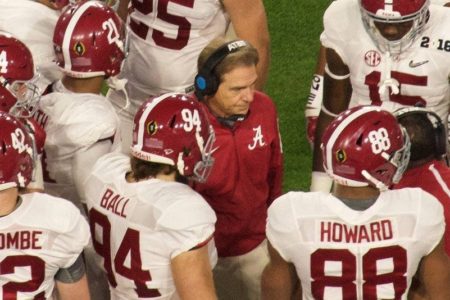
As I watched another dominating performance by the Alabama Crimson Tide defense on Saturday night, a question occurred to me: “I wonder what Nick Saban’s employment contract looks like?” Thanks to the wonders of the internet and the Alabama Open Records Act, that question was easily answered. If you want to see it for yourself, here’s a link: Nick Saban’s Contract.
Obviously, Nick Saban possesses much greater bargaining power than the typical employee who negotiates an employment contract. If he doesn’t get the terms he wants from Alabama, there are plenty of other schools that would practically do anything to secure his services. Nevertheless, there are at least three lessons from Coach Saban’s contract that employers can apply to their employees.
- Clearly Define Job Duties. Section 2.02 of the contract sets out Coach Saban’s job duties and responsibilities. That section is almost three pages long. Most employers won’t need three pages to describe the duties of a position. But, a clear statement of job duties is important because it ensures that both parties know the expectations associated with the position. Moreover, a clear statement of duties can help if litigation later becomes necessary over whether the employee adequately met his or her responsibilities.
- Protect Your Business Information. Nick Saban’s contract has numerous provisions which protect the University of Alabama’s business. Section 4.04(g) protects materials and works created by the University. Section 4.05(c) protects the University’s trademarks; and, Section 5.01(k) contains a broad confidentiality provision. Private employers should also carefully consider the nature of the information that will be provided to employees. If your employee takes that information when they leave, could they use it against you? If so, you will want to include provisions in the contract to protect your business both during and after an employee’s tenure.
- Include a Termination Provision. Section 5.01 of the contract contains extensive grounds for termination and provisions which apply depending on whether the termination is with, or without, cause. Most employers don’t need to implement such extensive procedures, but all employment contracts should include a termination provision. This is where bargaining power can really come into play. If the employee is filling a position that is easily replaceable, the employer might utilize a very strict “without cause” termination provision. But, if the employer really needs the employee, the employee might be able to negotiate more favorable terms.
We can’t all coach national championship teams, or receive a huge “talent fee,” like Nick Saban. But, Alabama employers can use some of the strategies from his employment contract when dealing with their own employees.